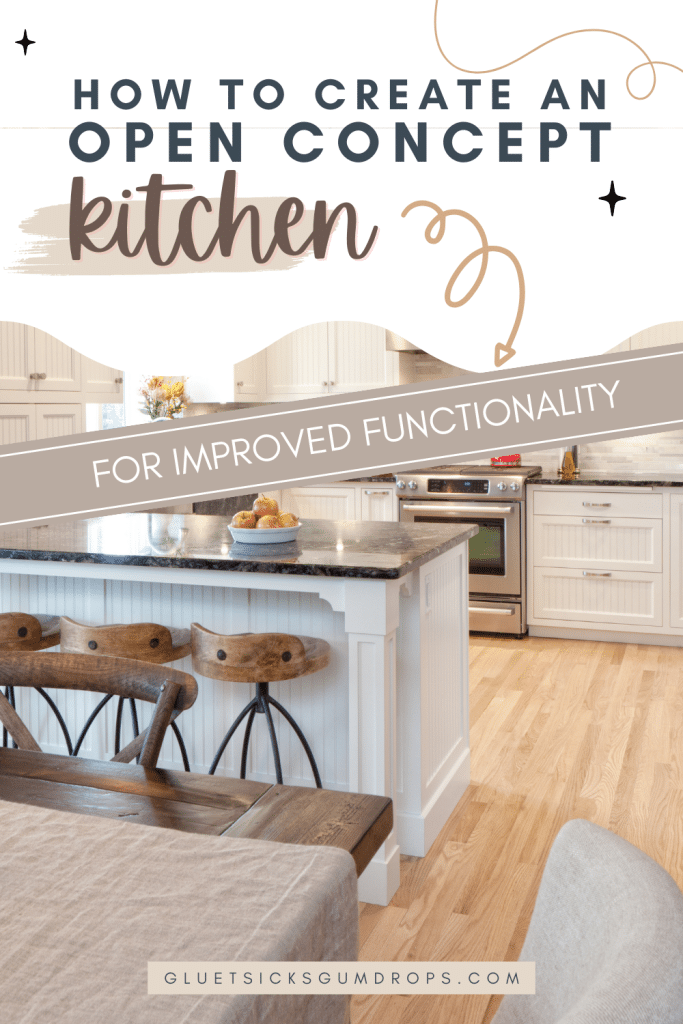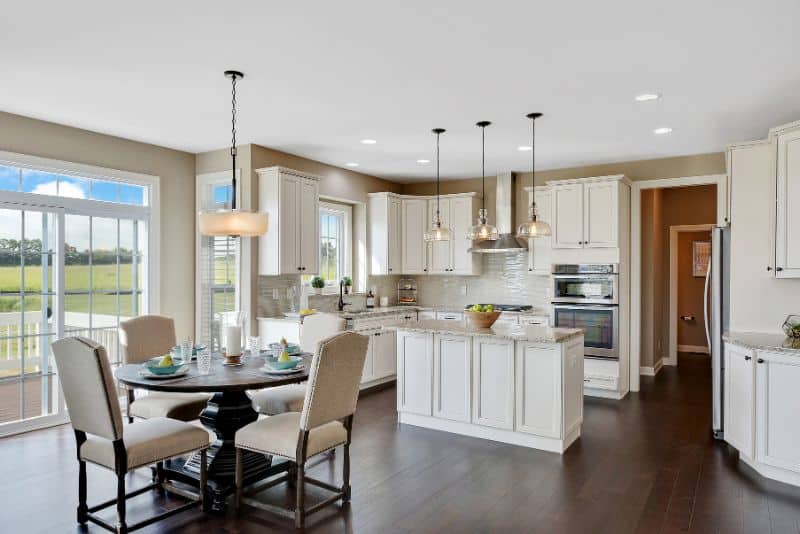People’s kitchens are often the heart of their homes, so they need to be spacious and adaptable. An open-concept kitchen can seamlessly blend with your living or dining area. This provides a cohesive environment that enhances functionality and fosters social interaction. If you’re contemplating this transformation, here’s a detailed guide to creating an open-concept kitchen.

Understand Its Purpose And Value
This type of kitchen differs from traditional versions by its absence of walls or barriers. As a result, it’s not separated from other living areas. The primary aim is to facilitate a fluid living space where activities blend seamlessly. From cooking and dining to lounging and entertaining, an open kitchen ensures no one is isolated from the action. If you need to do the washing up, you can still speak to your guests. If your child does their homework on the dining room table, you can oversee their activities while preparing meals in the kitchen.
Beyond aesthetics, this design offers improved lighting. It provides a sense of spaciousness and fosters communal experiences. Recognizing the underlying philosophy of the open concept is essential for bringing this vision to life.
Use Specialist Websites
The digital age offers homeowners a plethora of resources, and specialist websites on interior design can prove invaluable. These platforms often showcase real-life transformations and provide free expert advice. Websites like Houzz or Architectural Digest can serve as inspiration boards. They can help you visualize potential layouts, color palettes, and functional zones. It’s also worth using specific hashtags on social media sites such as Pinterest and Instagram. In turn, you can gain plenty of practical ideas for your kitchen.
Furthermore, user reviews and forums can guide you toward reliable contractors, or warn against common pitfalls. The people who click here confirm the popularity of using multi-surface visualizers and viewing galleries for inspiration. Folks want to research major brands and discover the top trends of 2023. They also desire to locate dealers so they can visit showrooms. Leveraging all of these resources can be pivotal in effectively planning and executing your open-concept kitchen.
Plan The Layout And Design Palette
An open-concept kitchen requires meticulous planning to define zones (such as the cooking area, dining space, and relaxation zone). An island can serve as both a preparation area and a dining spot. Integrating appliances within cabinets or under counters can maintain a sleek look. It’s also essential to consider the flow of movement. The ‘kitchen triangle’ concept emphasizes the efficient placement of the stove, sink, and refrigerator. They can be adapted to this open setting, ensuring optimal functionality.
The beauty of an open kitchen lies in its harmony with adjacent spaces. This cohesiveness is achieved through a unified design palette. Select complementary colors, materials, and textures for countertops, cabinetry, furnishings, and wall treatments. This ensures that spaces don’t clash, but flow into one another. Whether you’re leaning towards rustic wood tones or sleek monochromatic schemes, consistency is key. An eclectic mix can work, but it requires a discerning eye to ensure the elements sit well together.

Consider Furniture And Storage
Your furniture should be both aesthetically pleasing and functional/practical. Opt for items that can double up in their duties. Barstools around an island can serve casual meals, or be a workspace. Modular sofas in the adjoining living area can be repositioned during large gatherings. Investing in pieces that are both stylish and versatile will enhance the adaptability of your open space.
With walls being eliminated, traditional storage spaces might be compromised. However, innovative storage solutions can counteract this. Consider pull-out pantries, overhead cabinets, or drawers within islands. In turn, these can store kitchenware and reduce clutter. Integrating appliances or using magnetic strips for knives can free up counter space. Open shelving offers storage and can also serve as a design element. You can use it to display curated kitchenware or decor.
Incorporate Effective Lighting
Lighting plays the dual role of functionality and mood setting. Open kitchens often benefit from ample sunlight because they have no walls to obstruct natural light. However, as evening sets, effective artificial lighting becomes crucial.
Layered lighting (combining ambient, task, and accent lights) can cater to varied needs. You can install pendants over islands, under-cabinet lights, and dimmable overhead fixtures. These can collectively create a warm, efficient environment.
Creating an open-concept kitchen can merge design aesthetics with functional demands. As walls come down, barriers to communication and interaction dissolve. In turn, you pave the way for shared moments with your family, friends, and guests. In turn, your home can become more inclusive, vibrant, and harmonious.
